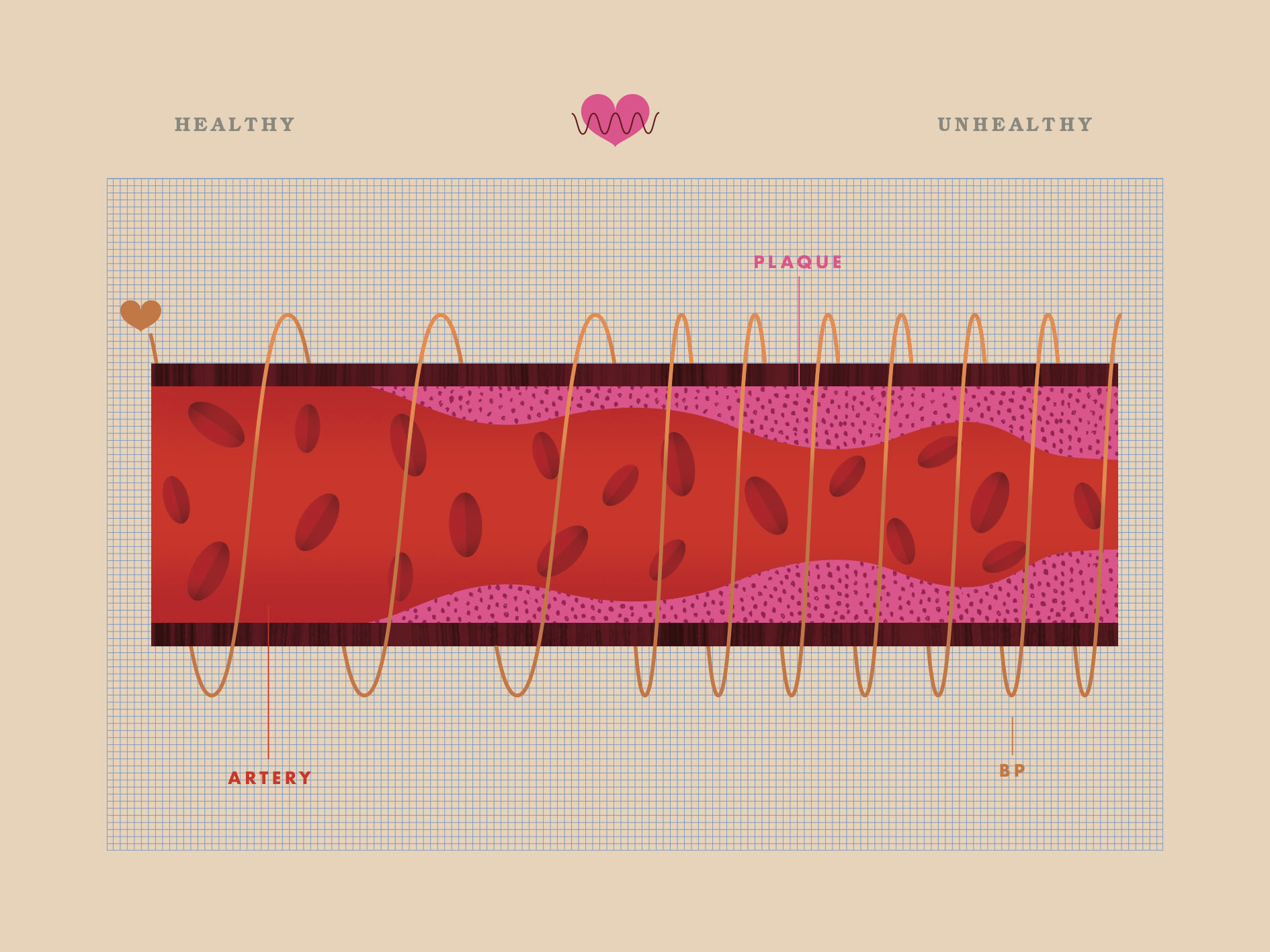You know that keeping your blood pressure in check makes for a strong heart—but you may not understand exactly what BP is or why it’s so important. Well, get this: 1 in 3 Australian adults have high blood pressure—and 20% of them don't even know they have it. Here, info and advice to make sure your ticker’s in tip-top shape.
So what exactly is blood pressure?
While your blood is travelling from your heart to all the other parts of your body, it pushes against the walls of blood vessels—this force is called blood pressure. When you get it measured, the doctor or nurse rattles off two numbers:
The top number is your systolic blood pressure, which represents the force against your artery walls as your heart contracts to pump out blood. This is when BP is at its highest.
The bottom number is your diastolic pressure, which occurs between heartbeats while your heart is resting to gear up for the next pump. That’s your BP at its lowest.
What’s too high? Officially, 140/90—but any reading over 120/80 is considered risky and should be watched.
High vs low
High blood pressure, or hypertension, can occur when plaque builds up in arteries, causing your blood to exert more force as it tries to squeeze through narrowed tubes. You may have heard high blood pressure called “the silent killer” because it doesn’t produce any symptoms; this is why it’s so important to get your BP checked regularly.
Chronic high blood pressure increases your risk for heart disease and, over time, can compromise the ability of blood to reach the brain, kidneys, eyes, and heart. It also puts excess strain on your heart (which has to work extra hard to push blood throughout your body) and arteries—a bulge (a.k.a. an aneurysm) may develop in weakened arteries, and if it ruptures, that may be deadly.
Low blood pressure isn’t harmful unless you experience dizziness, nausea, fainting, severe headaches, confusion, or light-headedness—if you do, see a doctor, as more serious conditions such as endocrine problems, nutrient deficiencies, or a medication issue may be at play.

Why blood pressure changes
Our blood pressure does a little jig throughout the day—rise and dip, rise and dip—because it’s ruled by your circadian rhythm. It slowly rises a few hours before you wake up, peaks in the afternoon, and is at its lowest while you sleep. Your BP will also adjust based on your oxygen needs: If your body needs more oxygen, as when you’re exercising or digesting food, it’ll spike slightly.
How to get the right reading
Blood pressure is temperamental—even a minor factor such as racing to your appointment can create an inaccurate reading, which can lead to overtreatment or undertreatment by your doctor. Follow this advice to make sure you get the most accurate reading possible.
Slow down: Rushing to your doctor’s office can elevate your blood pressure, which may throw off your reading. Plan to arrive early so you can sit calmly in the waiting room for about five minutes, then keep quiet while your pressure is taken; even small talk can up your systolic reading by 10 to 15 mm Hg. If you suffer from white coat syndrome—getting anxious in medical settings—speak up, because being stressed can lead to a higher reading than when you’re not.
Prep properly: Skip coffee until after your appointment because caffeine may temporarily spike your blood pressure. And take a trip to the bathroom before entering the exam room—a full bladder can stimulate an adrenaline-like hormone that often raises BP.
Watch your posture: Sit with your feet flat on the floor—crossed legs or dangling feet can bump up systolic results. Be sure your arm is supported and at heart level, as diastolic pressure (the bottom number) is affected by arm position. Ask if you can sit in a chair instead of on the examination table so as to keep your arm supported at the correct height.

Keep your blood pressure healthy
Whether you need to bring BP down or keep it where it is, the right lifestyle habits can support healthy blood pressure levels.
Eat a healthy diet: Of course you know not to smoke, but it’s also important to eat plenty of fresh fruits and vegetables, whole grains, lean protein, nuts, and legumes—all these foods contain specific nutrients that promote lower BP.
Move your body: Regular exercise is also key; it lowers BP by reducing blood vessel stiffness. Any type of physical activity is great—walking, running, swimming, or strength training. In fact, just 30 minutes of walking on most days can lower blood pressure significantly.
Keep a handle on stress: If you’re constantly frazzled, hormones are continuously being pumped out, which damages arteries over time and can lead to other conditions that raise your heart disease risk, such as weight gain and type 2 diabetes.





.png&h=193&w=250&c=1&s=1)
.png&h=193&w=250&c=1&s=1)

